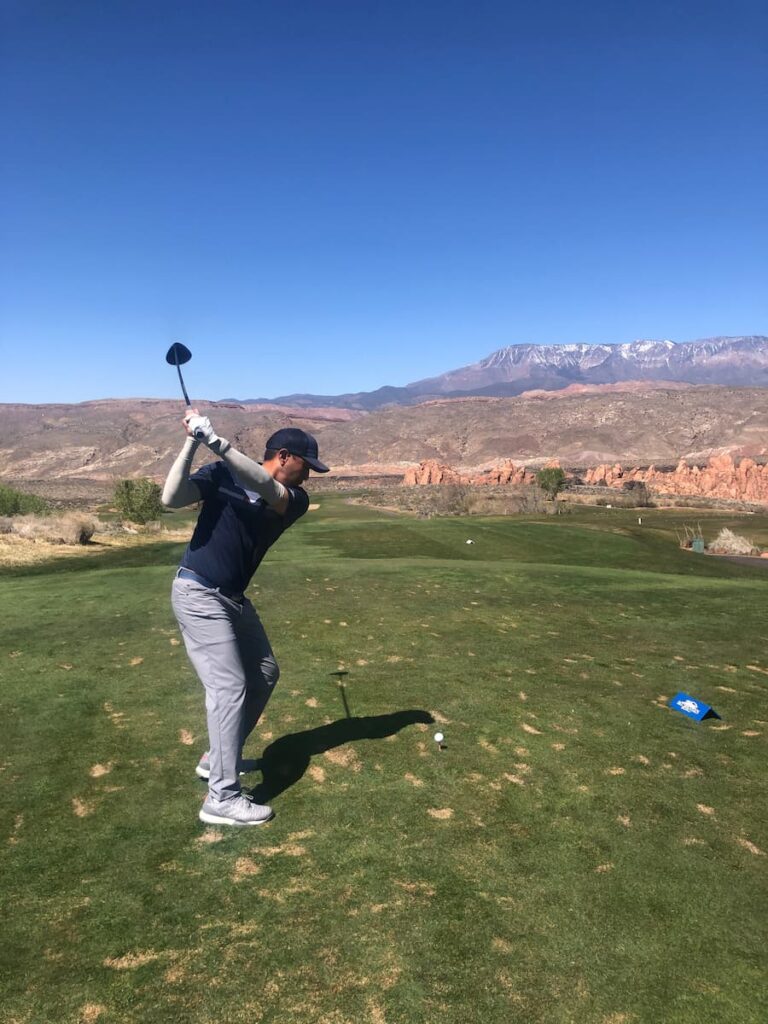Golf, a sport known for its strict rules and etiquette, often presents players with unique challenges on the course. One such challenge is deciding when to take a provisional tee shot – a ‘just in case’ golf shot. The provisional tee shot is a strategic move that can save you time, strokes, and frustration during a round. In this article, we will delve into what a provisional tee shot is, when to take one, and answer common questions to help golfers make informed decisions on the course.
What Is a Provisional Tee Shot?
A provisional tee shot, commonly referred to as a “provisional,” is an extra shot played off the tee after you believe your original ball may be lost or out of bounds. The provisional shot is taken in case you cannot find your initial ball or if it is deemed unplayable. By hitting a provisional, you can avoid returning to the tee box, saving time and potentially strokes.
When Should You Take a Provisional Tee Shot?
Uncertainty About the Ball’s Location
The most common scenario for taking a provisional tee shot is when you are uncertain about the whereabouts of your original ball. If your tee shot disappears into the water, thick rough, dense trees, or a hazard like a lake, where you cannot see it, it’s wise to hit a provisional ball.
Potential Out-of-Bounds
If your tee shot appears to be heading toward an area marked as out-of-bounds (e.g., a neighboring fairway, a road, or beyond course boundaries), taking a provisional shot can prevent you from incurring a penalty for a lost ball in a water hazard or out of bounds area.
Hazard Areas
When your tee shot enters an area with water hazards or lateral hazards, consider hitting a provisional. This is particularly important if you believe your ball may have entered the hazard but are unsure.
Pace of Play
To maintain a reasonable pace of play and show respect to fellow golfers (especially if you’re playing in a golf tournament), it’s courteous to take a provisional tee shot if there’s a chance you’ll need to look for your original ball extensively.
When You Should NOT Take a Provisional Tee Shot?
Confidence in the Ball’s Location
If you have a clear line of sight to where your tee shot landed, there’s no need for a provisional. You can proceed to play your next shot without the risk of losing the original ball.
Unplayable Lies
If you believe your ball is in an unplayable lie but not lost or out-of-bounds, you can opt to take relief under the applicable rules (e.g., lateral relief, back-on-the-line relief) rather than hitting a provisional. The Rules of Golf offer provisions for handling unplayable lies.
Keeping up with Pace of Play
If you’re in a practice round and there is a group pushing you from behind (and no one in front of you), skip the provisional shot and just drop the ball with a penalty instead. If you hit a provisional, not only do you have to take time to hit the ball, but also to find and retrieve it.
You are Playing Under the “Ready Golf” Rule
The “ready golf” rule allows you to hit your next shot even if your playing partners have not yet found their balls. You typically play with this rule when you’re in a hurry (like if it’s getting dark or you’re having trouble keeping up with pace of play), so don’t insist on taking a provisional shot to avoid annoying your playing partners or the group behind you.
Limited Supply of Golf Balls
If you’re running low on golf balls and want to conserve your supply, avoid taking unnecessary provisional shots. Instead, focus on finding your original ball or proceeding with a drop if applicable.
FAQs About Provisional Tee Shots
Does Taking a Provisional Tee Shot Incur Penalties?
No, taking a provisional tee shot does not result in any penalties. It is an allowed practice under Rule 18 of the Rules of Golf.
Can I Choose to Play My Provisional Ball Even If I Find My Original Ball?
If you find the original ball while it is still in play, the player must abandon the provisional ball (Rule 18.3c(3)), even if the original ball is in a worse spot.
What If I Take a Provisional Shot and Then Find My Original Ball?
If you find your original ball within the three-minute search time and it is playable, you should abandon the provisional ball and continue playing with the original.
How Do I Mark My Provisional Ball?
To distinguish your provisional ball, it’s advisable to announce it clearly as such to your playing partners. You can also use a different brand or number of ball to differentiate it from your original.
What If My Provisional Shot Lands in a Hazard or Out-of-Bounds Area as Well?
If your provisional shot also ends up in an unplayable or penalty area, you’ll have to proceed under the applicable rules for that area, including taking a drop or penalty.
How Far Away Should I Play My Provisional Shot?
You should play your provisional shot as close to where you think your first ball went as possible. However, you do not have to play it exactly where you think your first ball went.
Conclusion
Taking a provisional tee shot in golf is a strategic move that can save you from penalty strokes, reduce frustration, and maintain a reasonable pace of play. Knowing when to take a provisional is an important skill for golfers of all levels. By understanding the situations in which it is appropriate and by following the rules and etiquette of the game, you can ensure a smoother and more enjoyable round of golf. So, the next time you find yourself in doubt about the fate of your tee shot, don’t hesitate to take a provisional—it might just be your key to a better golfing experience.


